Jacksonville, Fl. — The “Buresh Bottom Line”: Always be prepared!.....First Alert Hurricane Survival Guide... City of Jacksonville Preparedness Guide... Georgia Hurricane Guide.
STAY INFORMED: Get the * FREE * First Alert Weather app
FREE NEWS UPDATES, ALERTS: Action News Jax app for Apple | For Android
WATCH “Preparing for the Storm”
WATCH “The Ins & Outs of Hurricane Season”
READ the First Alert Hurricane Center “Survival Guide”
LISTEN & WATCH “Surviving the Storm” - WOKV Radio & Action News Jax
***** ALWAYS CHECK & RE-CHECK THE LATEST FORECAST & UPDATES! *****
REMEMBER WHEN A TROPICAL STORM OR HURRICANE IS APPROACHING: Taping windows is *NOT* helpful & will not keep glass from breaking.
Realize the forecast cone (”cone of uncertainty”) is the average forecast error over a given time - out to 5 days - & *does not* indicate the width of the storm &/or damage that might occur.
** FIRST ALERT! ** - Anyone living in - or traveling to - the Caribbean, Gulf of Mexico, Yucatan Peninsula &/or the U.S. Gulf Coast should stay up to date on the latest forecast as Ian moves over the Caribbean... then over the Eastern Gulf of Mexico. A reminder to NOT focus to much on the exact landfall point or intensity forecast. **
LOCAL - NORTHEAST FLORIDA/SOUTHEAST GEORGIA - POTENTIAL IMPACTS FROM IAN - BASESD ON THE *CURRENT* FORECAST PATH:
* Swells from Fiona are slowly decreasing but onshore flow & an enhanced rip current risk will continue at area beaches through Sunday evening.
* Few if any impacts from Ian through at least Tue.... with the first rainfall - still not necessarily directly a result of Ian - arriving Wed. (depending on a Fl. hit more to the south vs. more to the north which would result in rain bands arriving later)
* Tropical moisture surging north ahead of Ian should start to bring some showers, isolated t’storms from south to north through the day Wed. This will start to saturate the already wet ground across the area potentially leading to flooding issues Thu./Fri. as heavy Ian rain bands move across the area & potentially “train” across some areas. The saturated soil may also lead to trees being more easily uprooted by winds that otherwise would not be much of a problem. The local has area has dried out some over the past 7-10 days but the very wet Aug./early Sept. has still left soils essentially saturated... + we’re coming off a week of higher than avg. tides partially due to the recent new moon cycle, so there’s a good deal of water “in the system”.
* Seas & surf will increase through the week
* Gusty winds arrive by Thu./Fri.
* Depending on the location of Ian, waterspouts & tornadoes may occur Wed.-Fri.
* The exact timing & intensity of any & all Ian impacts for NE Fl./SE Ga. will be dependent on the exact location of Ian in reference to Jacksonville & will, of course, be subject to change.
* This weekend & the beginning of the week is your chance to get organized, check storm kits, prepare your yard & home for a storm, check & test (understand!) generators & top off gas tanks. This course of action would be especially advisable along the west coast of Fl. & the Panhandle.
Atlantic Basin:
Tropical wave - ‘98-L’ that moved off of Africa last week is moving over the Southern Caribbean & Central Caribbean & was upgraded to tropical depression #9 Friday then to tropical storm “Ian” Fri. evening. This is a classic wave in that it formed from a complex of intense storms over Africa... encountered hostile conditions (shear & dry air) for days before finding more favorable conditions. Some land interaction with the north coast of Colombia & Venezuela plus some shear out of the northeast kept Ian weak but low pressure managed to form at the surface Thu. followed by a burst of persistent t’storms by Thu. night. There is still some shear out of the north/northeast for right now, but Ian will soon be in a low shear environment. As the storm gains some latitude, most ingredients are in place for the development of a significant tropical cyclone over the Central &/or Western/Northwest Caribbean... with pretty rapid intensification a distinct possibility. Hurricane hunter recon through early Sunday noted the low level center was not aligned with the mid & upper level centers. Bursts of t’storms should eventually curl around a single center - which may have a tendency to “jump” until there’s good organization - through the day Sunday which would then allow Ian to quickly strengthen.
The global forecast models still present a serious conundrum with a wide spray of where the storm might go in relation to Florida though not as wide as previous days. The difference is roughly 200-300 miles between the GFS & European when it comes to a hit on Florida. & it’s very much worth mentioning that the GFS *has been* leading the charge so far on accuracy, especially as it relates to location & the longer westward movement. So while there’s agreement on development of a major hurricane & model solutions have narrowed some, there’s still significant spread on speed of forward movement & exact location with the GFS slower, more north & the European faster & more east. But - again - the model differences are more narrow & the European is trending slowly west with each model run. The GFS remains steadfast on a Panhandle hit. Confidence is increasing that the west coast of Florida & possibly parts of the Panhandle with be hit by a strong, possibly major (Cat. 3+) hurricane during the upcoming mid to late week. Both the GFS & European models are initializing well which is a positive... the GFS has been better on the more west & south track the last 3 days & currently, but there may be a “jump” of sorts to the north or northwest as the t’storms become more concentrated & a center evolves. Agreement between the models is o.k. at first with a slowly developing tropical cyclone over the Western &/or Northern Caribbean. The GFS cannot & should not be ignored despite it’s extreme west (Louisiana which is going to be too far west) solution during the middle of last week as the GFS was the model of choice on Fiona last week. Once to Fl., the European is south of Tampa & a little earlier - Wed. - but has been trending north. The Euro then cuts Ian sharply east across Fl. followed by a fairly sharp turn north with a second landfall on the Carolina coast (taking Ian south then east of Jacksonville but with pretty significant impacts for NE Fl./SE Ga.) The GFS model is to the Eastern Fl. Panhandle & slower - about Thu. More time over the Northeast Gulf - a more northward motion next week - could result in some weakening before landfall due to increasing shear & some drier continental air possibly becoming involved with the Ian’s circulation. In any case... a significant hit appears likely own the Fl. west coast &/or Panhandle. The UKMET model has not been very good this season so far but for what it’s worth, the model is now closer to the European solution on the Fl. landfall - near Tampa - but weaker & probably much too weak.
So the ingredients are in place for the development of a major hurricane over the Caribbean with very warm water including high oceanic heat content (warm far below the surface of the ocean)... sufficient mid & upper level moisture... mostly low shear that will eventually be in concert with the storm’s movement (so less detrimental). Shear does increase by mid to late next week but may be offset some by upper level ventilation (nearby trough) & the fact that Ian should be well organized by then. In the end... the storm’s intensity will come down to how quickly Ian can organize... any land interaction... & how long the tropical cyclone stays over the Gulf vs. moving into Fl. We will have to watch for the possibility of pretty fast intensification upon approach to the Cayman Islands, Cuba &/or over the Southeast Gulf where the environment looks especially favorable. It looks like the fairly steady/swift movement - of a then well developed tropical cyclone - north across Cuba will brief & little more than a speed bump. Drier mid & upper level air will increase next week closer to Fl. & over the Northeast Gulf along with at least some increase in shear - this combination will hopefully drop Ian’s intensity from its peak over the Gulf, especially if the eye gets farther north vs. an earlier, more east hit on the Fl. west coast.
Some thoughts on incorporating real time data into the models: hurricane hunter aircraft flew across the SE Caribbean & nearby areas last Wed. evening & the weather data was ingested into the 00Z GFS model run, but was not incorporated again until Sat. afternoon (00Z Sun. output). In my opinion based on past experience - it’s of no help until there is constant surveillance of the surrounding atmosphere that is then incorporated into the analysis data for each model run. I suspect the single run with real-time data is why the GFS had major “hiccups” midweek with a track so far to the west. There did not seem to be such a major hiccup when realtime data was incorporated Sat. night. According to the NHC: “data collected from special radiosonde releases beginning later today (Sat.) and a scheduled NOAA G-IV flight will help resolve the steering flow around Ian and deep-layer trough that is forecast to be over the eastern U.S. early next week.” This kind of mid & upper level data was being gathered again Sunday morning for use in the initialization of forecast models.
Steering currents to consider:
(1) the GFS “won” the forecast battle on Fiona hands down over the European model while the UKMET was consistently out to lunch. Simply based on the “you’re only as good as your last forecast”, it’s very hard to ignore the GFS. Not to mention the model’s stability from one run to the next has greatly improved over the last few days. The same can be said for the European when it comes to its recent run to run consistency farther to the east... though it did trend west pretty steadily Fri./Sat.
(2) there should be some “extra” ridging underneath - to the south of - intense hurricane Fiona. This alone could result in a more westward track for a bit of a while which seems to have been the case so far. But it’s unclear how much ridging will manage to build behind only recently departing Fiona as an upper level trough sweeps across the Eastern U.S. through the early part of the week which will help dictate the timing & angle of the turn north out of the Caribbean.
(3) If Ian remains weaker & more shallow, it will be steered more by low level (trade) winds vs. the deep tropospheric flow.
(4) a tropical storm/typhoon has formed over the W. Pacific & will move due west to Asia. Perhaps of more importance is a previous tropical cyclone that turned rather sharply to the northeast & moved near & east of Japan & has since become a post-tropical low. A teleconnection implies the more west movement of Ian will be somewhat short lived followed by the sharper turn north then northeast. (W. Pacific track map at the bottom). The trough off the east coast of China essentially mirrors the trough near/off the east coast of the U.S. with strong low pressure to the east (Fiona over the Atlantic) followed by another trough to the east.
Movement summary:
Ian will at least stay far to the south of recently hard hit Puerto Rico & Dominican Republic. The time table - *for right now* is Central/Northern/NW Caribbean through the weekend... well south & west of Jamaica through Sunday night... a quick crossing of Cuba late Mon. into Tue... then the SE Gulf of Mexico mid week followed by a hit on Florida’s west coast or the Panhandle about Wed./Thu. depending on the whether or not Ian is moving more north (later landfall) or more east (earlier landfall)- timing is subject to change, of course! Do keep in mind that if the European model verifies then impacts to Florida will be earlier while the GFS solution would still be Florida but later - by at least 24 hours. It remains early on the path & strength of Ian. There will be changes, stay up to date!






Spaghetti plots includes ensembles of the models:


If Ian’s forecast track continues to trend west, the rainfall forecast should decrease - at least some:




Deep oceanic heat content is impressive across the Caribbean - lots of warm water well below the surface of the ocean:
Strong shear over the far Eastern Caribbean weakens a great deal more to the north & west:
Radar imagery from S. Fl. Water Management District:

Check out the very warm deep oceanic heat content over the Caribbean, far SW Atlantic & parts of the Gulf:


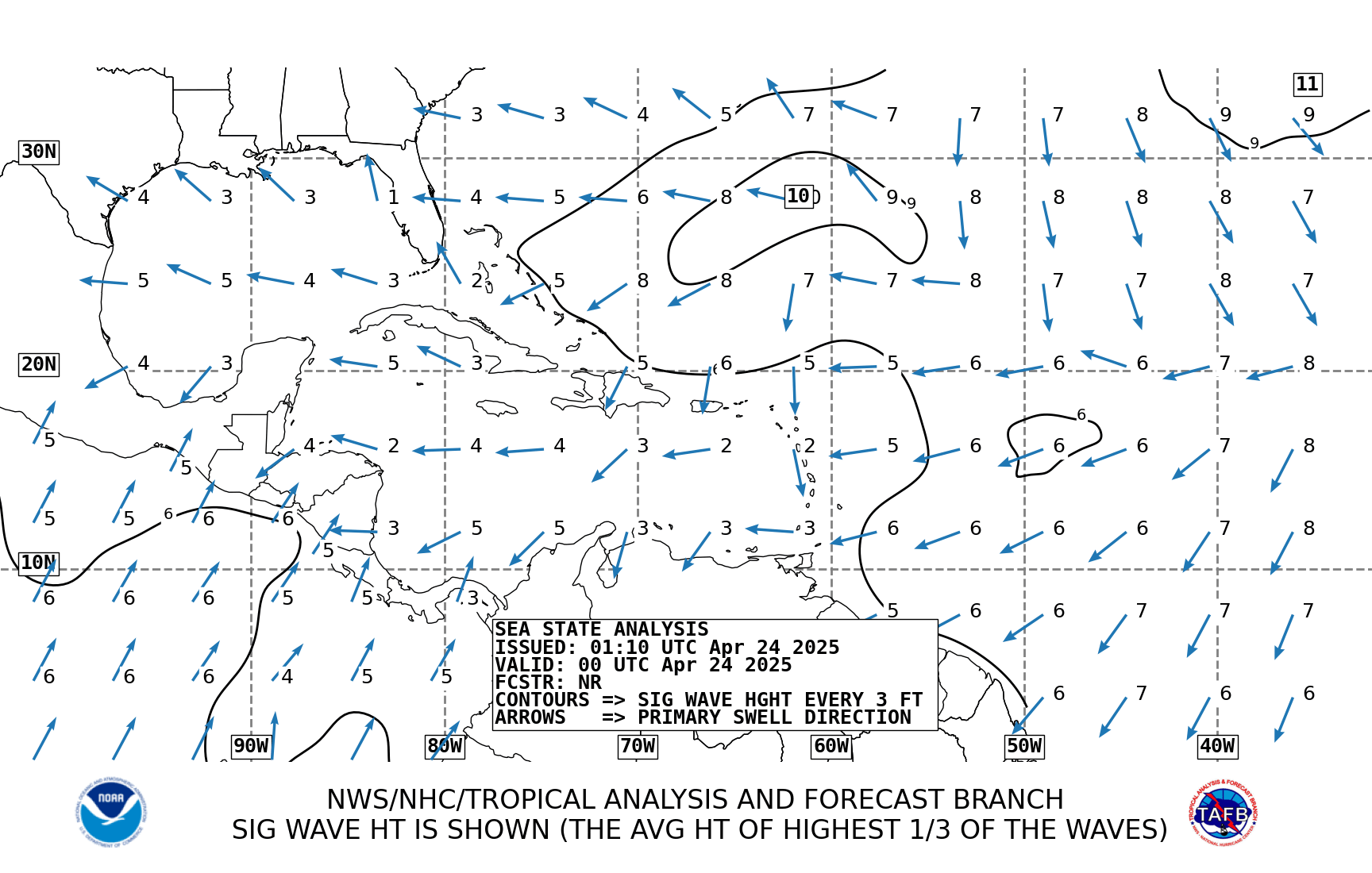
Tropical wave - ‘96-L’ was upgraded to tropical depression #7 Wed. morning then to tropical storm “Fiona” Wed. evening & to a hurricane Sun. morning with a Cat. 1 (85 mph winds) landfall Sunday afternoon about 3:20pm EDT along the southwest coast of Puerto Rico near Punta Tocon followed by another landfall (Cat. 1/90 mph winds) early Mon. at 3:30am EDT along the coast of the Dominican Republic near Boca de Yuma. The hurricane strengthened into a Cat. 2 late Mon. then to a ‘major’ Cat. 3+ hurricane early Tue. - the first major hurricane of the Atlantic season. The avg. date for such an occurrence is Sept. 1. Fiona reached Jacksonville’s latitude - 700-900 miles to the east Thu. afternoon. The eye went west & northwest of Bermuda early Fri. & became extratropical Fri. evening upon approach to Atlantic Canada but was still a very powerful storm for Nova Scotia & Newfoundland. In fact, Fiona made landfall this morning with a central pressure of 931.6 mb, which is a new Canadian record in a landfilling storm. The last NHC Fiona advisory was issued Saturday.
Tip of the hat to the GFS for winning the model forecast on this one - hands down. An upper level trough captured Fiona bending the post-tropical low to the north & northwest as the remnant low now slowly fills (weakens)
Of note - the center moving a little south of due west into the face of the shear - as was the case early in the storm’s developmental stages - led to an eventually powerful hurricanes that had a similar trend. And indeed Fiona followed suit reaching Cat. 3 intensity last Tue. & a Cat. 4 early Wed.


#firstalertwx Saildrone captured amazing new video from inside Category 4 #HurricaneFiona . In partnership with NOAA has 7 ocean drones stationed in the Atlantic Ocean and Gulf of Mexico this season @ActionNewsJax @WOKVNews pic.twitter.com/L0LBg7yfR6
— Mike Buresh (@MikeFirstAlert) September 23, 2022
#firstalertwx pretty amazing #Saildrone video from the northeast quadrant of #HurricaneFiona - Thu. morning, 09/22 pic.twitter.com/1BBqFZKRib
— Mike Buresh (@MikeFirstAlert) September 23, 2022
Hurricane hunter aircraft snapshot of the eye of Fiona early Tue.!:
Elsewhere....
“Gaston” was upgraded Tue. & will stay over the Central & Northeast Atlantic while drifting toward the west & weakening with lessening impacts for the Azore Islands... no impacts to the U.S. Despite eventually moving back over warm water to the southwest, it appears the remnant low will be too weak to take advantage of the warmer sea surface temps.

And last but not least(!)... tropical depression #10 was upgraded to tropical storm “Hermine” Fri. (thanks Eric Blake, NHC!) near the coast of Africa over the far Eastern Atlantic. The system turned sharply north over the E. Atlantic while weakening. The last NHC advisory was issued early Sunday.

And a tropical wave is moving from the Eastern to Central Atlantic. Any development with this wave will be slow as it moves northwest.... another wave is coming off the coast of Africa at a lower latitude & might have some long term potential.



Water vapor loop shows plenty of mid & upper level moisture (white & green areas) across a good part of the Atlantic Basin:



September origins:
Averages below based on climatology for the Atlantic Basin through September. This season so far is well below avg.:

Wind shear:




Saharan dust spreads west each year from Africa by the prevailing winds (from east to west over the Atlantic). Dry air - yellow/orange/red/pink. Widespread dust is indicative of dry air that can impede the development of tropical cyclones. However, sometimes “wanna’ be” waves will just wait until they get to the other side of - or away from - the plume then try to develop if other conditions are favorable. In my personal opinion, way too much is made about the presence of Saharan dust & how it relates to tropical cyclones. In any case, we’ve had several large dust plumes spread west to the Caribbean & Gulf with the peak of Saharan dust typically in June & July.

2022 names..... “Julia” is the next name on the Atlantic list (names are picked at random by the World Meteorological Organization... repeat every 6 years). Historic storms are retired [Florence & Michael in ’18... Dorian in ’19 & Laura, Eta & Iota in ‘20 & Ida in ‘21]). In fact, this year’s list of names is rather infamous with “Charley”, “Frances”, “Jeanne” & “Ivan” retired from the ‘04 list (all hit Fl.) & “Matthew” was retired in 2016. The WMO decided - beginning last year - that the Greek alphabet will be no longer used & instead there will be a supplemental list of names if the first list is exhausted (has only happened three times - 2005, 2020 & 2021). The naming of tropical cyclones began on a consistent basis in 1953. More on the history of naming tropical cyclones * here *.





East Atlantic:





Mid & upper level wind shear (enemy of tropical cyclones) analysis (CIMMS). The red lines indicate strong shear:
Water vapor imagery (dark blue indicates dry air):

Deep oceanic heat content over the Gulf, Caribbean & deep tropical Atlantic:

Sea surface temp. anomalies:


SE U.S. surface map:

Surface analysis centered on the tropical Atlantic:

Surface analysis of the Gulf:

Caribbean:

GFS wave forecast at 48 & 72 hours (2 & 3 days):
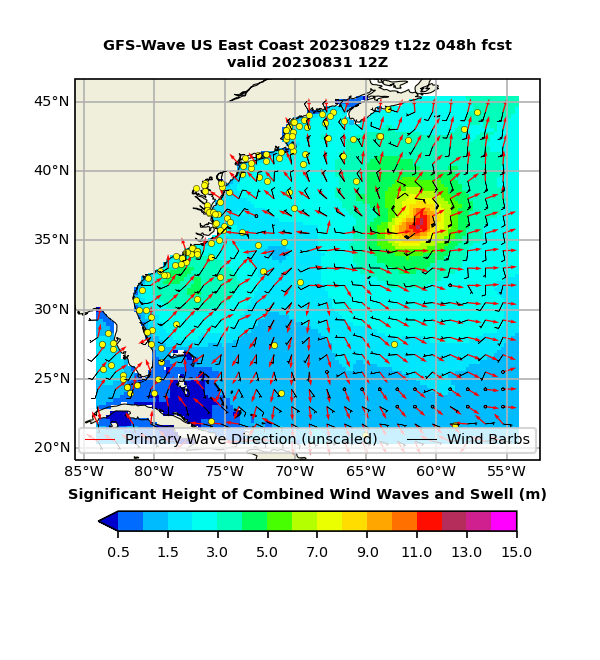

Atlantic Basin wave period forecast for 24, 48 & 72 hours respectively:




Updated Atlantic seasonal forecast from early Aug. - NOAA & CSU:
The East Pacific:
“Newton” has formed over the E. Atlantic & will move - “by law” (LOL) westward away from the Pacific coast of Mexico:



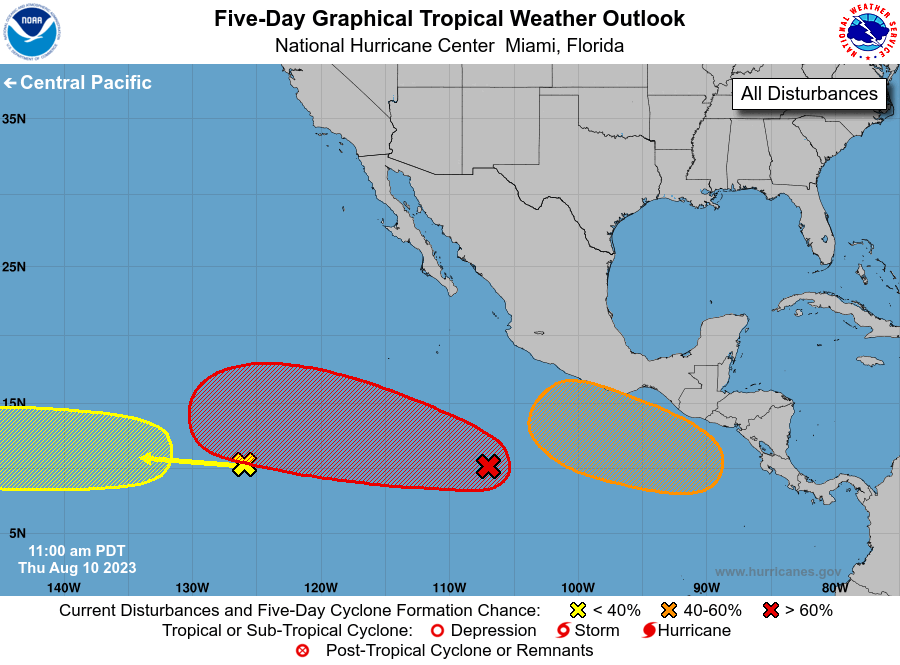
West Pacific:

Global tropical activity:



Typhoon “Noru” will move west across the Northern Philippines through Sun. night then west to Vietnam about Wed.:

Cox Media Group

:quality(70)/cloudfront-us-east-1.images.arcpublishing.com/cmg/WW5AJL3ARQUGDQMAQUNSFX4CLE.jpg)

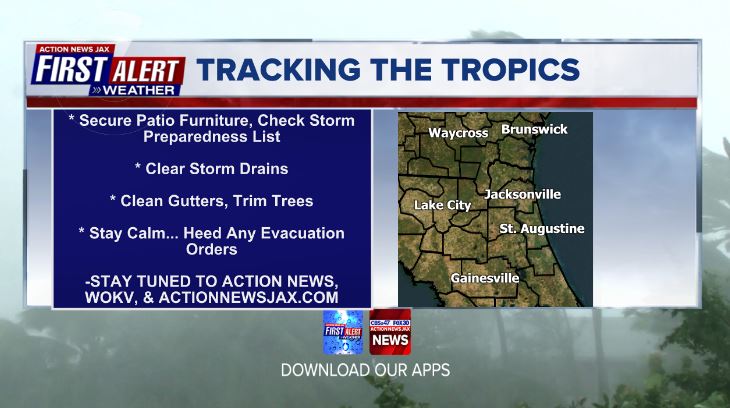
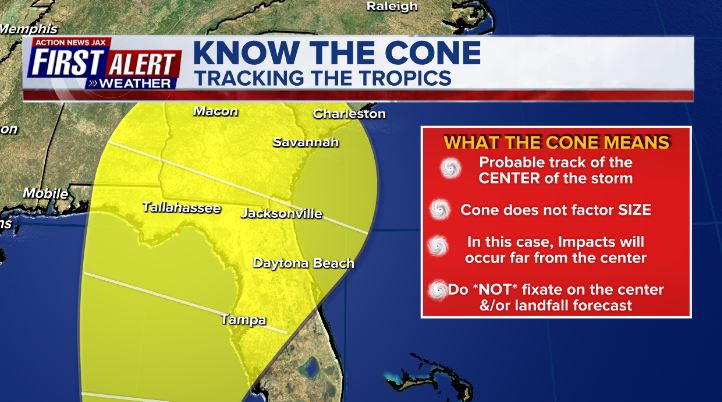
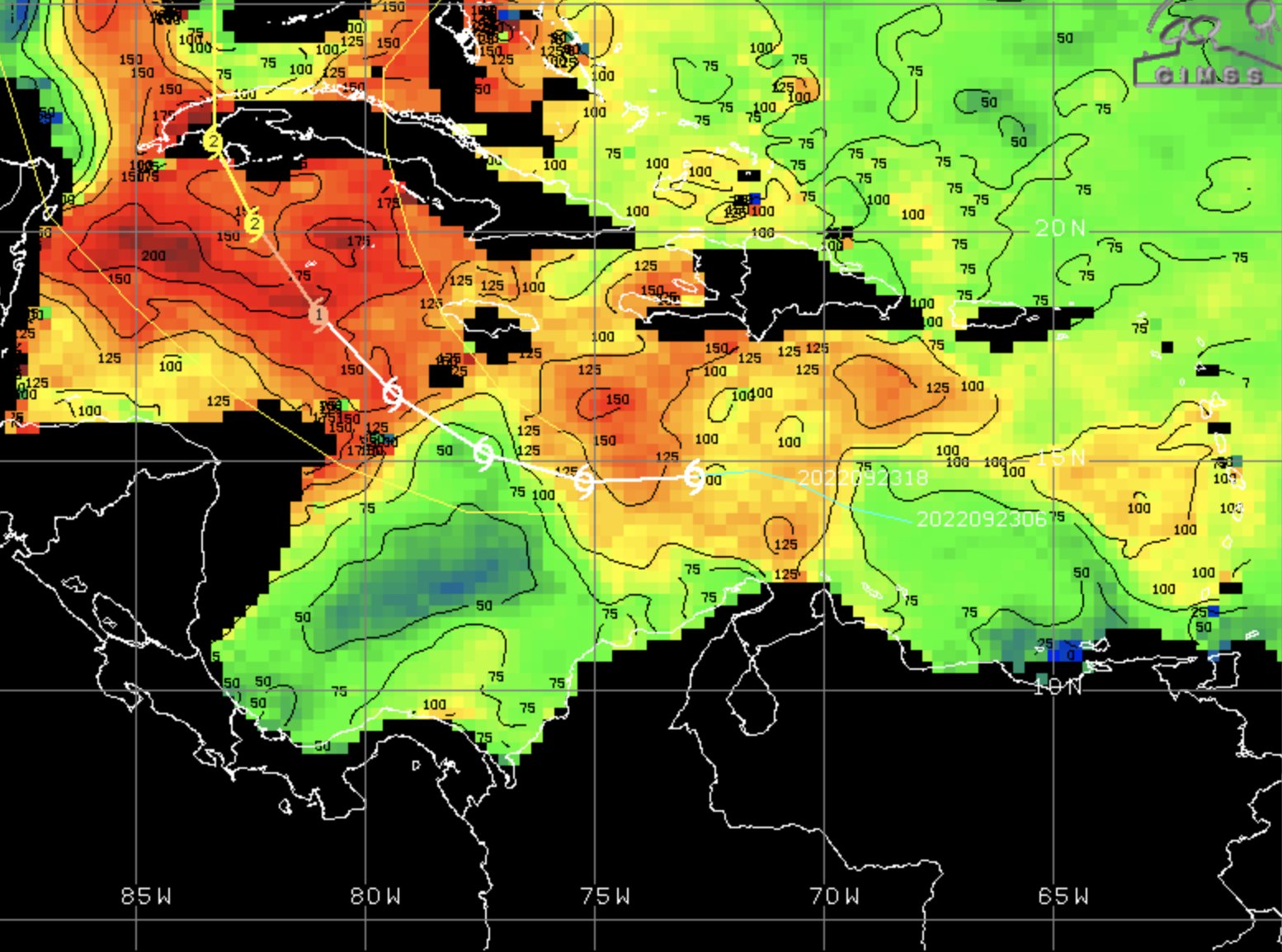
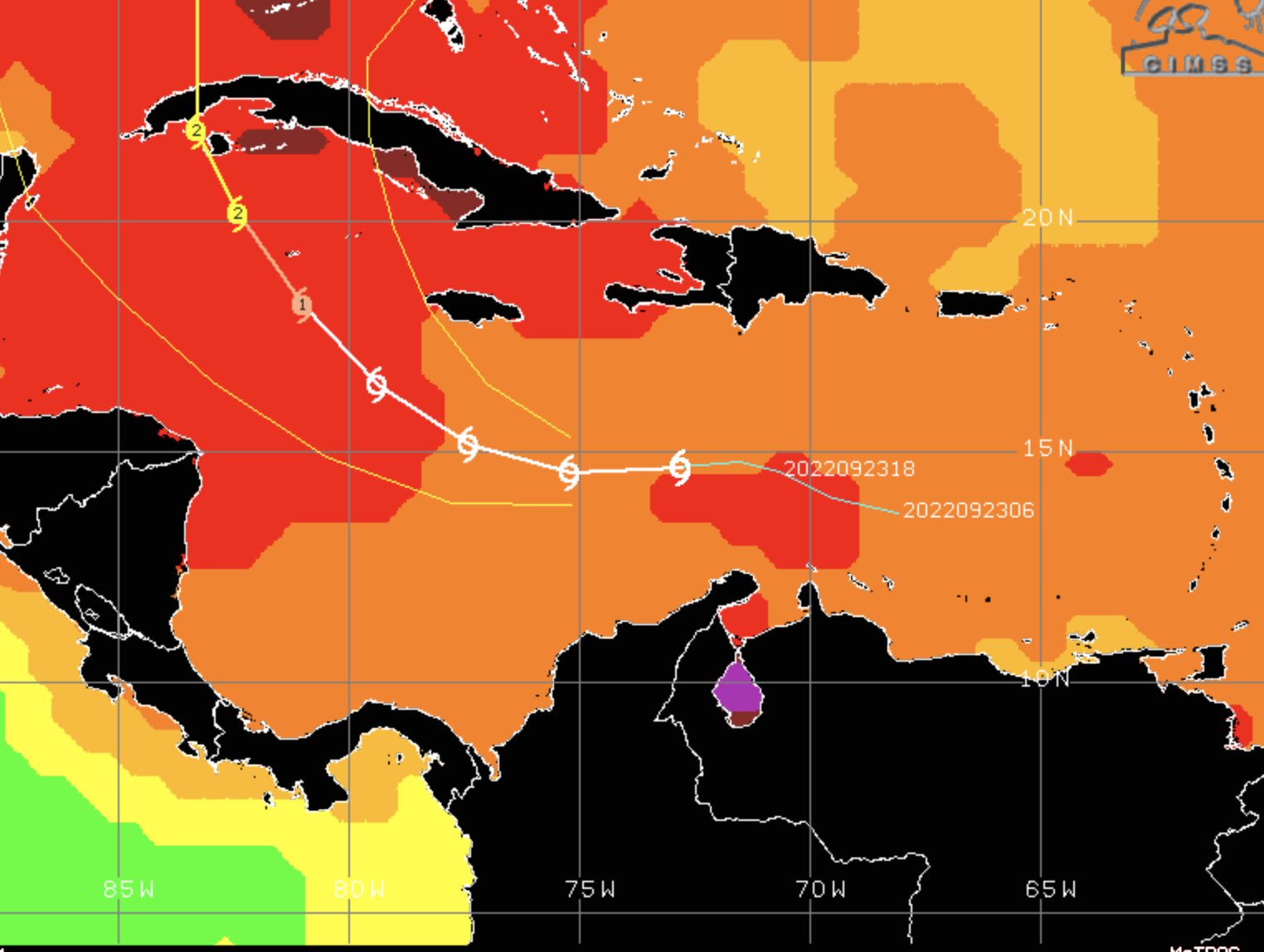
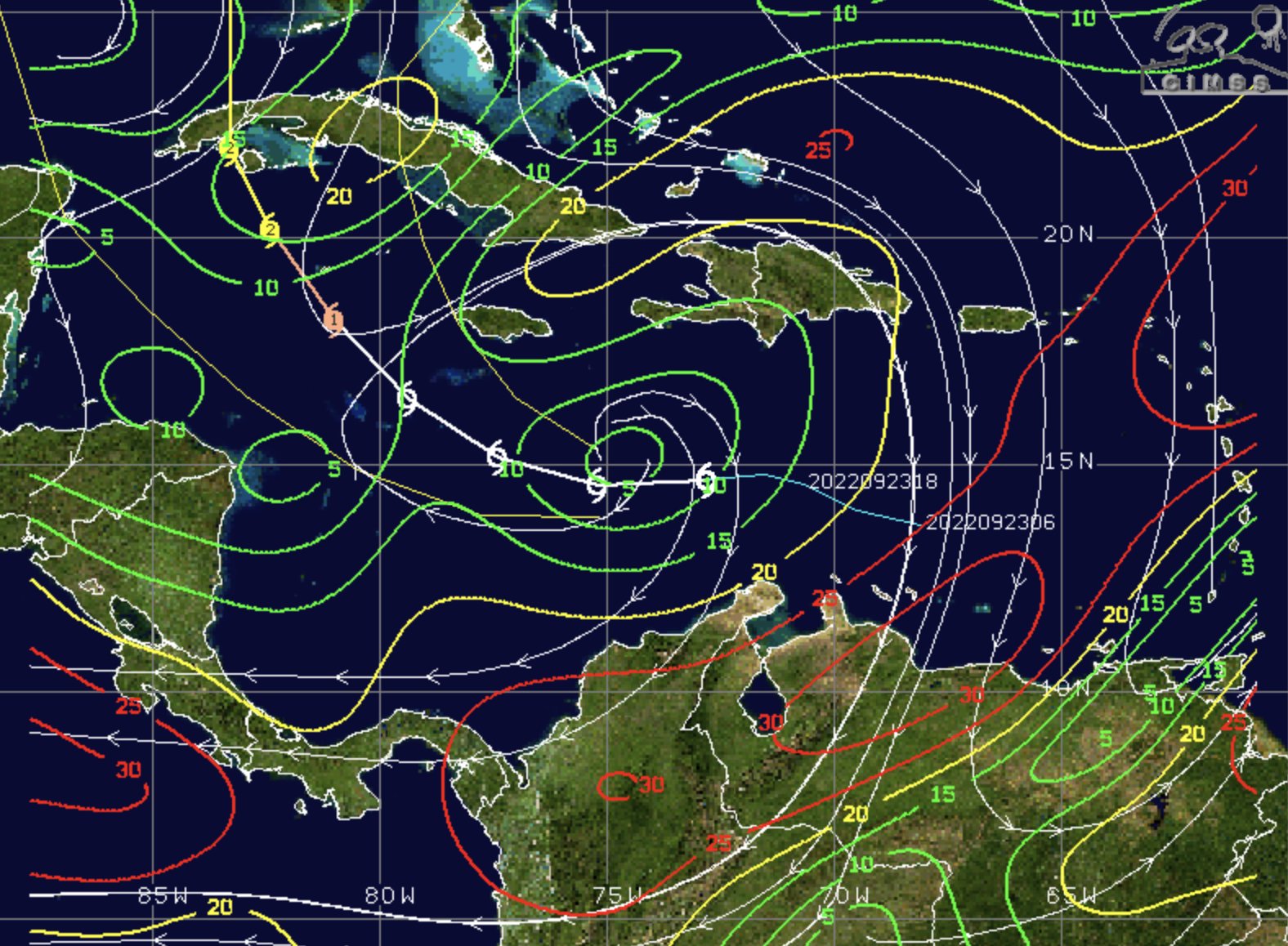

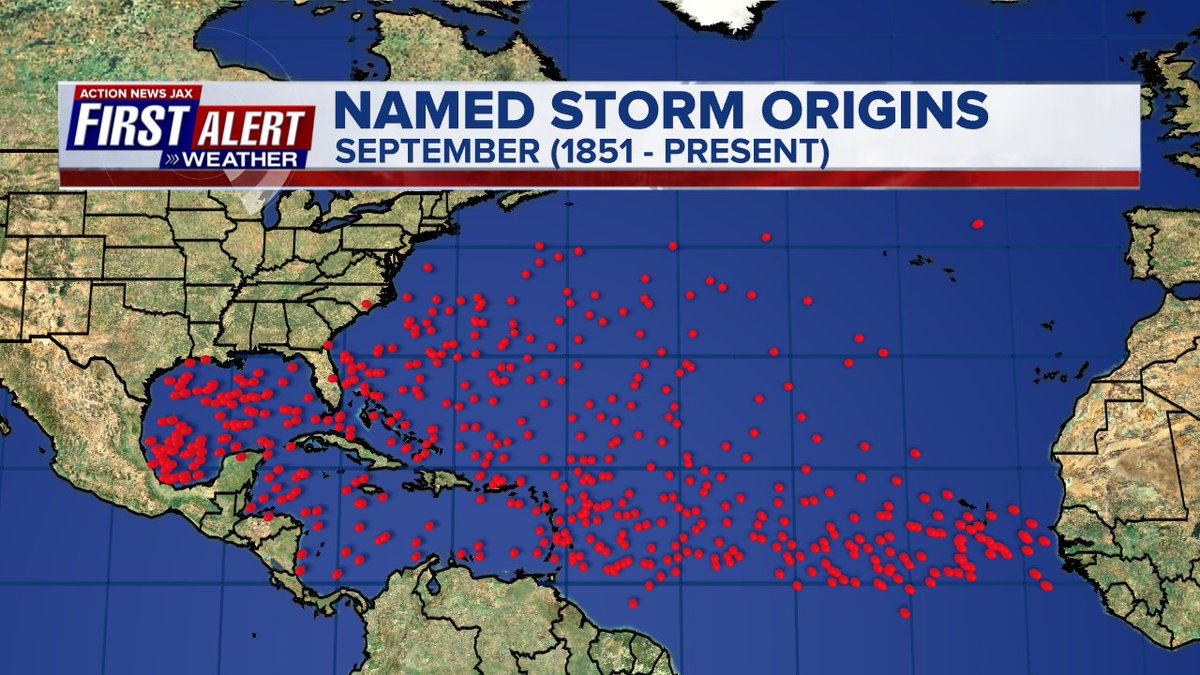
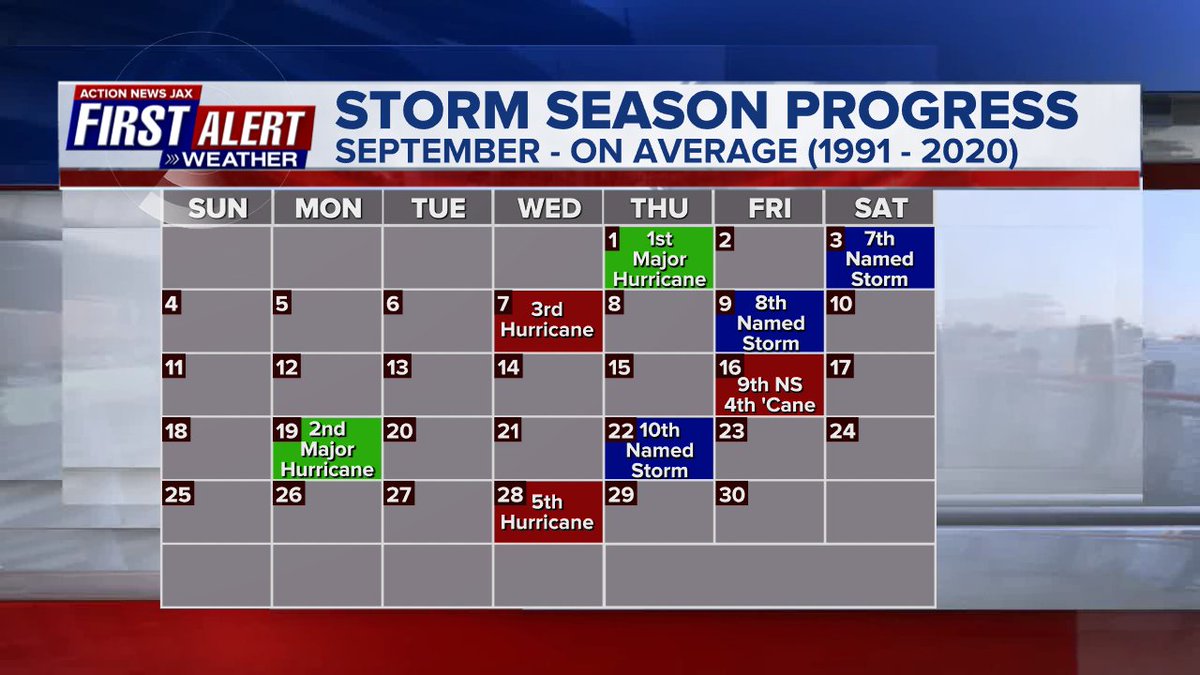
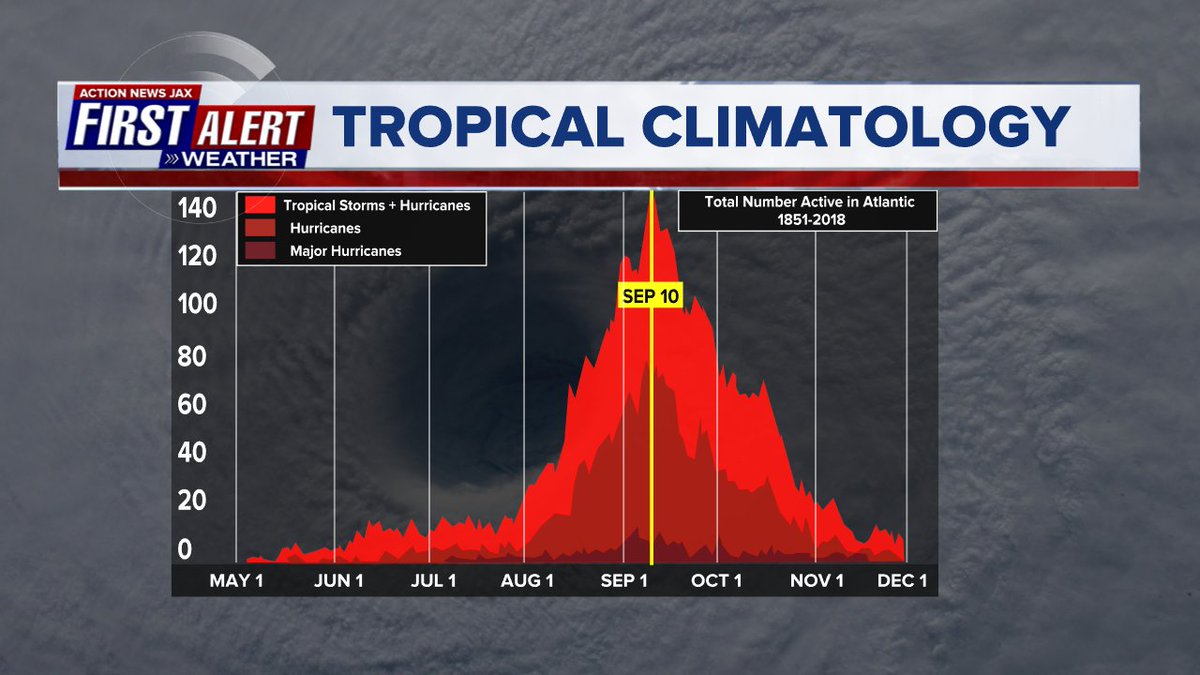
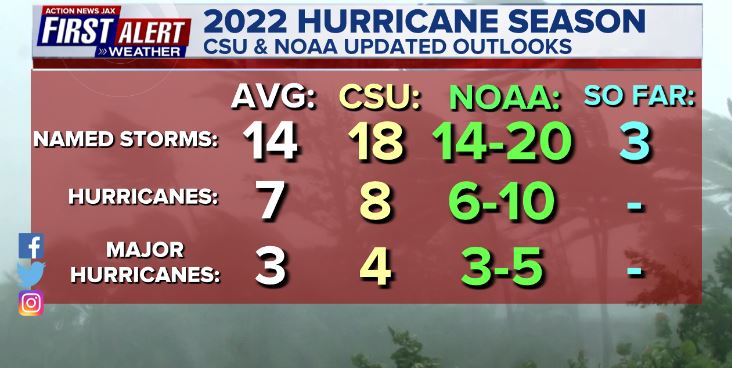
:quality(70)/cloudfront-us-east-1.images.arcpublishing.com/cmg/HJ3L3HBBJBH6PB5ZFB3SVGFXSU.png)
:quality(70)/cloudfront-us-east-1.images.arcpublishing.com/cmg/SKX4RKW645ERTATCLA4V2FVRKQ.png)
:quality(70)/cloudfront-us-east-1.images.arcpublishing.com/cmg/SCWUKX27NRFXVFR2KCQYQ3ZPQY.jpg)
:quality(70)/cloudfront-us-east-1.images.arcpublishing.com/cmg/K6OREARNAFCUVNXWZV2C57LXIU.jpg)
:quality(70)/cloudfront-us-east-1.images.arcpublishing.com/cmg/V7JDMMD6JJEEHIL6C7OSLV3ABU.png)
:quality(70)/cloudfront-us-east-1.images.arcpublishing.com/cmg/L2HTAJZLOSL3MOA7FYOKMNQWTM.jpg)
:quality(70)/cloudfront-us-east-1.images.arcpublishing.com/cmg/4T66YHUPMZH5XLB36GNJKZDIKU.jpg)
:quality(70)/cloudfront-us-east-1.images.arcpublishing.com/cmg/4XQR5SPQJHJEEKZPFDZATRKX4U.jpg)
